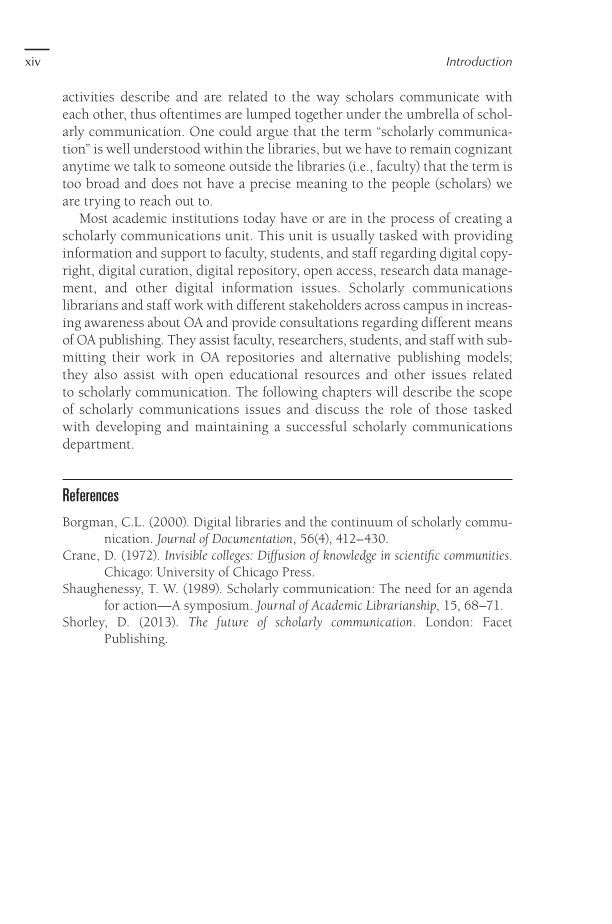xiv Introduction activities describe and are related to the way scholars communicate with each other, thus oftentimes are lumped together under the umbrella of schol- arly communication. One could argue that the term “scholarly communica- tion” is well understood within the libraries, but we have to remain cognizant anytime we talk to someone outside the libraries (i.e., faculty) that the term is too broad and does not have a precise meaning to the people (scholars) we are trying to reach out to. Most academic institutions today have or are in the process of creating a scholarly communications unit. This unit is usually tasked with providing information and support to faculty, students, and staff regarding digital copy- right, digital curation, digital repository, open access, research data manage- ment, and other digital information issues. Scholarly communications librarians and staff work with different stakeholders across campus in increas- ing awareness about OA and provide consultations regarding different means of OA publishing. They assist faculty, researchers, students, and staff with sub- mitting their work in OA repositories and alternative publishing models they also assist with open educational resources and other issues related to scholarly communication. The following chapters will describe the scope of scholarly communications issues and discuss the role of those tasked with developing and maintaining a successful scholarly communications department. References Borgman, C.L. (2000). Digital libraries and the continuum of scholarly commu- nication. Journal of Documentation, 56(4), 412–430. Crane, D. (1972). Invisible colleges: Diffusion of knowledge in scientific communities. Chicago: University of Chicago Press. Shaughenessy, T. W. (1989). Scholarly communication: The need for an agenda for action—A symposium. Journal of Academic Librarianship, 15, 68–71. Shorley, D. (2013). The future of scholarly communication. London: Facet Publishing.
Document Details My Account Print multiple pages
Print
You have printed 0 times in the last 24 hours.
Your print count will reset on at .
You may print 0 more time(s) before then.
You may print a maximum of 0 pages at a time.





















































































































































































